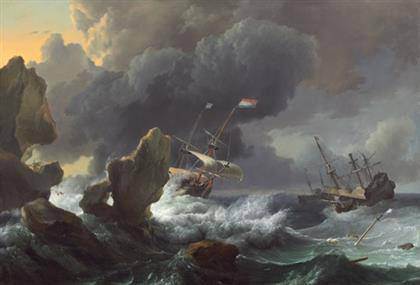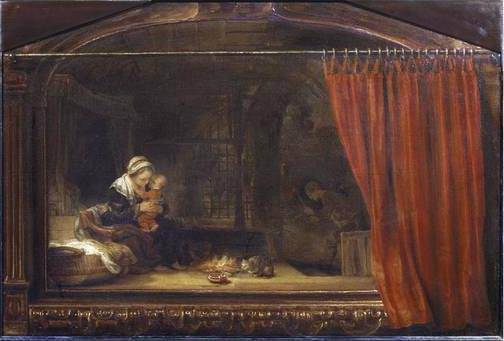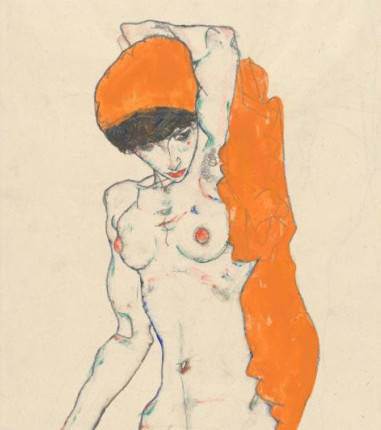
Ludolf Backhuysen: “Ships in Distress off a Rocky Coast”, 1667, oil on canvas. National Gallery of Art, Ailsa Mellon Bruce Fund.
Dutch Golden Age Marine Paintings in Washington In a special exhibition at the National Gallery of Art, Washington, ‘Water, Wind, and Waves: Marine Paintings from the Dutch Golden Age’ explores the multifaceted relationship the Dutch had with water during their Golden Age. July 1 – November 25, 2018.]]>
Source: National Gallery of Art, Washington
Demonstrating the various roles water played in Dutch daily life, images range from quiet harbor vistas to stormy seascapes, wintry skating scenes to summery water views. In addition to a selection of loans from several private collectors and a public museum, the exhibition also presents a number of works from the Corcoran Collection.
Today, some 400 years after the works in ‘Water, Wind, and Waves’ were created, water endures as a defining feature of Dutch society. Whether for innovations in the management of rising sea levels or the charming allure of its canals, the country is known for its strong relationship to the North Sea and the world’s oceans, and to its network of rivers, canals, and waterways. This lasting visual identity originated in the 17th century when the Dutch Republic emerged as a great sea power following the founding of the Dutch East India Company in 1602 and West India Company in 1621 and naval successes against the Spanish and English.
Artists like Hendrick Vroom (1566–1640) capitalized on a growing audience for maritime scenes to create some of the earliest Dutch examples, including “A Fleet at Sea” (c. 1614). Drawing on his firsthand knowledge of naval architecture after years spent traveling by sea, Vroom captured a majestic 24-gun Dutch warship traveling through a harbor alongside coastal fishing and cargo boats. Later in the century, naval battles continued to be a popular subject, particularly while the Dutch were engaged in several wars with England in the 1650s and 1660s. In addition to their general maritime scenes, artists such as Willem van de Velde the Younger occasionally created large works commemorating specific battles. Van de Velde’s “The Dutch Fleet Assembling before the Four Days’ Battle of 11-14 June 1966, with the ‘Liefde’ and the ‘Gouden Leeuwen’ in the Foreground” (1670) shows two famed ships of the Amsterdam Admiralty—at left the Liefde (Love), a 70-cannon man-of-war ship, and at right the Gouden Leeuwen (Golden Lions), identifiable by the two back-to-back lions on its stern.
Related content
‘Dutch Flowers’ at the National Gallery London (exhibition, 2016)
Follow us on:


